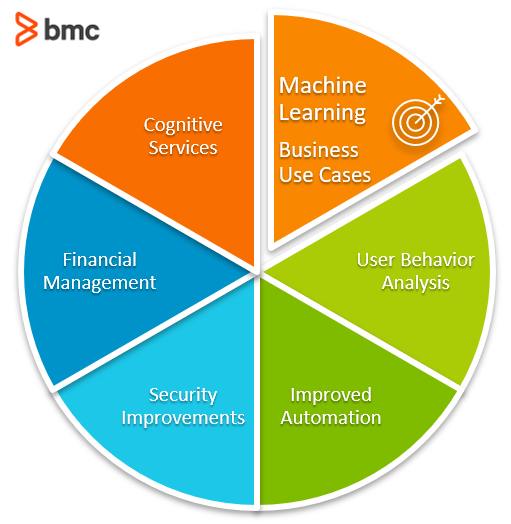With the explosive growth of data science, more and more businesses are focusing on improve their business processes by harnessing the power of technologies like
- Big data
- Machine learning (ML)
- Artificial intelligence
Among them, machine learning is a technology that helps businesses effectively gain insights from raw data. Machine learning—specifically machine learning algorithms—can be used to iteratively learn from a given data set, understand patterns, behaviors, etc., all with little to no programming.
This iterative and constantly evolving nature of the machine learning process helps businesses ensure that they are always up to date with business and consumer needs. plus, it’s easier than ever to build or integrate ML into existing business processes since all the major cloud providers offer ML platforms.
So, in this article, we will dive into how machine learning benefits businesses of all shapes and sizes.
Machine learning overview
Before we look at ML benefits, we need to have a basic understanding of how ML works. Machine learning refers to the process of extracting meaningful data from raw data sets.
For example, let’s consider an online retail store that captures the user behavior and purchases within the website. This is merely data. But machine learning plays a significant role, enabling the online store to analyze and extract the patterns, stats, information, and stories hidden within this data.
A key factor that differentiates machine learning from regular analytical algorithms is its adaptability. Machine learning algorithms are constantly evolving. The more data the ML algorithm consumes, the more accurate their analytics and predictions will be.
Harnessing the power of machine learning has enabled businesses to:
- More easily adapt to ever-changing market conditions
- Improve business operations
- Gain a greater understanding of the overall business and consumer needs
Machine learning is quickly becoming ubiquitous across all industries from agriculture to medical research, stock market, traffic monitoring, etc. For instance, machine learning can be utilized in agriculture for various tasks such as predicting weather patterns and crop rotation.
Machine learning can be combined with artificial intelligence to enhance the analytical process gaining further benefits to businesses. Services like Azure Machine Learning and Amazon SageMaker enable users to utilize the power of cloud computing to integrate ML to suit any business need.
(Read our full ML vs AI comparison.)

Machine learning use cases
Since we have a basic understanding of machine learning, let’s discuss the benefits it offers to businesses and organizations.
User behavior analysis
Analyzing user behavior is one of the most common use cases of machine learning—especially in the retail sector.
Think of a retail experience. Whether online or in person, businesses collect a vast amount of customer purchase information. Running this data through a machine learning algorithm allows businesses to predict consumer purchasing habits, market trends, popular products, and so on, allowing retailers to make informed business decisions based on this predicted information. For instance, ML enables companies to:
- Make accurate decisions on managing stock
- Streamline ordering according to market and consumer demand
- Increase the overall efficiency of the logistical and operational processes
- Integrate with marketing platforms to directly market products targeted at specific consumers
In an online environment, ML can:
- Analyze user browsing habits
- Predict user preferences accurately
- Offer targeted suggestions
Here’s a couple more examples:
- In a pharmaceutical business that runs drug trials, user behavior analysis can help determine the effectiveness of drugs and predict any anomalies and outliers.
- In the maritime industry, a logistics company can predict shipping demand by feeding the logistical data such as routes, transported goods, durations, etc. to a machine learning algorithm.
Analyzing user behavior is not limited to consumers. Any entity in this context can be considered users who interact with the business. ML can be used to extract hidden patterns and behaviors that may not be readily visible on the surface, offering businesses a far greater understanding of the overall business processes.
Improved automation
Automation has significantly impacted almost all business sectors by streamlining mundane and repetitive tasks, saving both time and resources. The next evolution of automation is combining these automation techniques with machine learning to create automation processes that are consistently improving.
At an industrial manufacturing level, machine learning can be used to improve the manufacturing process. This can be achieved by evaluating the current manufacturing models and understanding all the deficiencies and pain points. This way, businesses can quickly remedy any issues to maintain the manufacturing pipeline in peak condition.
Of course, ML is not limited to the manufacturing process. Combining ML with AI can, for instance, create intelligent automated robotic workers that are consistently evolving. These automated robots will:
- Greatly reduce manufacturing defects
- Increasing efficiency and scalability
ML automation goes beyond industrial applications and benefits other sectors like agriculture, scientific research, etc. In agriculture, different tasks like automated farming activities and research can be improved by integrating with ML to predict and decipher different data sets.
(See what to automate in the workplace.)
Security improvements
With the flood of web-based technologies, the world has become more and more reliant on web services. This has led to a more connected and convenient lifestyle. However, there are also some risks associated with it:
- Phishing attacks
- Identity theft
- Ransomware
- Data breaches
- Privacy concerns
- Etc.
Businesses follow various prevention and control mechanisms to ensure the security of the users and business. Some of them include firewalls, intrusion prevention systems, threat management applications, strict data storage policies. In large companies, dedicated security teams consistently monitor, update, and fix vulnerabilities in online applications.
Machine Learning can be useful here to offload some of the monitoring and vulnerability assessment tasks to an automated algorithm to complement existing security teams.
For instance, let’s consider a simple spam filter. Businesses can greatly reduce spam or risky emails ending up in employee inboxes by incorporating ML in the spam filter. As ML is always learning, the more emails the ML algorithm considers, the more accurate the filtering becomes.
Another example is threat assessment, where most online applications face different kinds of attacks on a day-to-day basis. Machine learning can effectively predict future attack vectors by consuming the past attack data and pointing out vulnerabilities within the application. Taking this a step further, development teams can integrate ML within an application test phase to evaluate application vulnerabilities before releasing it to a production environment.
(Learn about shift left & continuous testing.)
Financial management
Machine learning algorithms can be used in financial analytics for:
- Simple tasks, like predicting business expenses and performing cost analysis
- Complex tasks such as algorithmic trading and fraud detection
All these use cases rely on analyzing historical data to predict future outcomes accurately. The accuracy of these predictions can fluctuate depending on the ML algorithm and the provided data.
For instance, a small data set with a relatively straightforward ML algorithm will be sufficient for simple tasks such as predicting the expenses of a business. However, for algorithmic trading, ML algorithms will go through multiple revisions, modifications, and decades of data until production-ready accurate ML models are found. Investors and stockbrokers heavily depend on ML to predict market conditions accurately before entering the market.
These kinds of timely and accurate predictions help businesses to manage overall expenses while increasing profitability. When this is coupled with automation, user analytics will lead to significant cost savings (OpEx).
Cognitive services
Machine learning can also aid in improving cognitive services such as image recognition (computer vision) and natural language processing.
For example, improvements in image recognition technologies will enable businesses to create more secure and convenient authentication options, and product identification to power autonomous retails services such as cashier-less checkout. This has led to innovative retail experiences such as Amazon Go.
With natural language processing and a better understanding of the benefits offered by ML, businesses can easily cater to a wide variety of audiences from different geographic, cultural, and ethnic backgrounds. Furthermore, the ability to provide services or experiences in native languages will automatically lead to a wider customer base interacting with the business.
Don’t ignore machine learning
Machine learning is rapidly becoming a core technology that is organically implemented throughout all business sectors to solve complex business problems while improving the effectiveness and scalability of an organization.
Even with all the complexities associated with the proper implementation of ML, businesses are ready to undertake this time-consuming and relatively expensive process as it provides tangible and substantial benefits over any traditional analytical method.
Related reading
- BMC Machine Learning & Big Data Blog
- Bias & Variance in Machine Learning: Concepts & Tutorials
- Supervised, Unsupervised & Other Machine Learning Methods
- Data Ethics for Companies
- Top AIOps Tools & How To Choose
- AI/Human Augmentation: How AI & Humans Can Work Together
- Confusion Matrix in Machine Learning: Precision & Recall Explained






